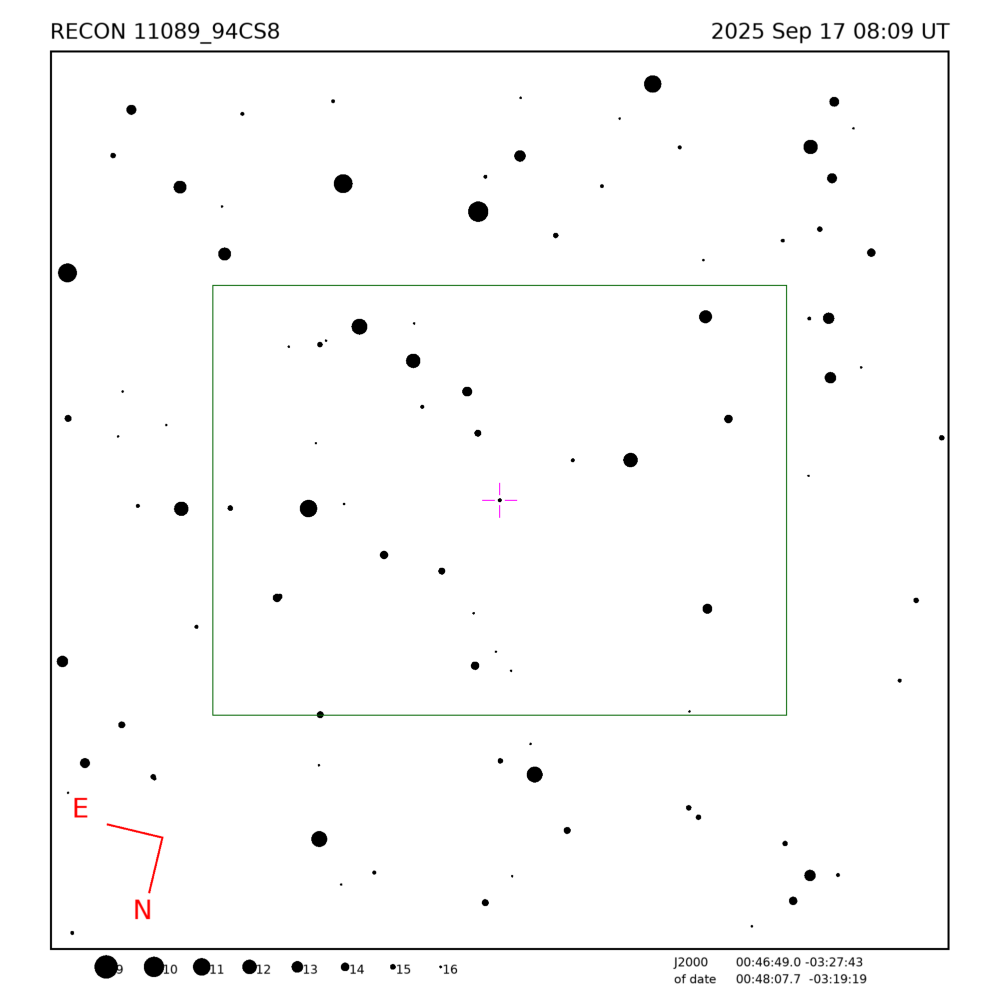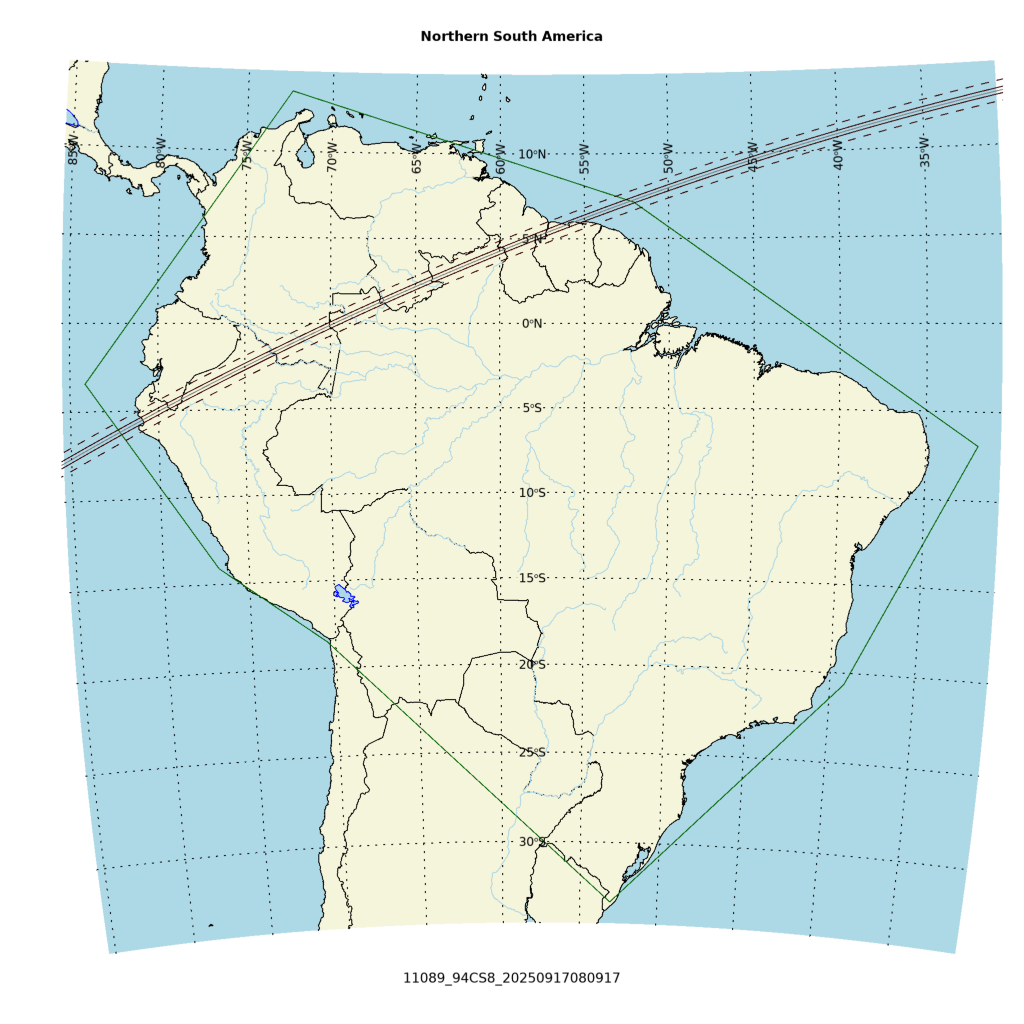
Occultation event with (11089) 94CS8, event index number 1291
Regions able to see the event: SAmericaN
Geocentric closest approach at 2025/09/17 08:09:17 UTC
J2000 position of star is 00:46:49.0 -03:27:43
Equinox of date position of star is 00:48:07.7 -03:19:19
Star is 112 degrees from the moon. Moon is 20% illuminated.
Stellar brightness G=15.9, apparent brightess of occulting body is G=15.6
Use an exposure time of 0.55 seconds with the standard RECON-QHY system.
SNR of 3.3 per integration for unocculted signal
Expected flux drop is 44% with SNR of 1.4 for the occulted depth (per occulted point)
Apparent velocity is 15.9 km/sec on the sky relative to the star, or, 18.5 arcsec/hr.
Position angle of asteroid motion is 61.3 degrees
The recommended exposure time corresponds to 8.8 km per image.
The 1-sigma error in the time of the event is 1.0 seconds.
The 1-sigma cross-track error in the shadow position is 14.0 km.
The sky-plane scale is 3098.8 km/arcsec.
Diameter estimates:
42.3 km assuming a 5% albedo, maximum of 2.7 sec for a central chord
17.3 km assuming a 30% albedo, maximum of 1.1 sec for a central chord
Cross-track diameter of 37.0 km used for deployment plan.
Star training set for 11089_94CS8, (2025/09/17 08:09UT) Object RA Dec mag sep mel Fomalhaut 22:59:03.9 -29:29:08 1.2 36.78 144 Diphda 00:44:52.7 -17:50:45 2.0 14.55 118 PPM 182626 00:46:42.7 -04:29:19 5.9 1.22 113 PPM 182682 00:49:22.5 -03:34:20 8.1 0.40 112 PPM 182660 00:48:34.5 -03:27:22 10.0 0.17 112 11089_94CS8 00:48:07.7 -03:19:19 15.6 112 Positions are for equinox of date


Star training set for 11089_94CS8, (2025/09/17 08:09UT) Object RA Dec mag sep mel Fomalhaut 22:57:39.7 -29:37:24 1.2 36.78 144 Diphda 00:43:35.8 -17:59:11 2.0 14.55 118 PPM 182626 00:45:24.2 -04:37:44 5.9 1.22 113 PPM 182682 00:48:03.9 -03:42:44 8.1 0.40 112 PPM 182660 00:47:15.9 -03:35:46 10.0 0.17 112 11089_94CS8 00:46:49.0 -03:27:43 15.6 112 Positions are for J2000